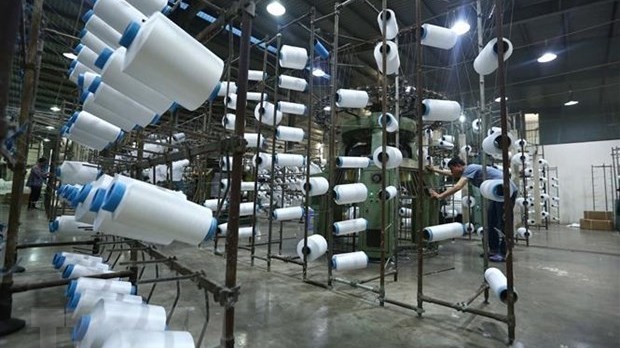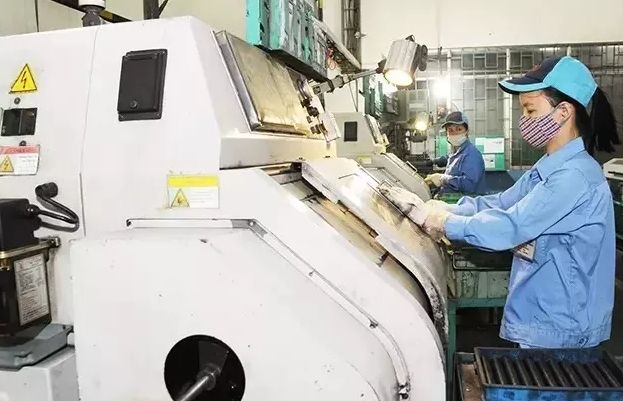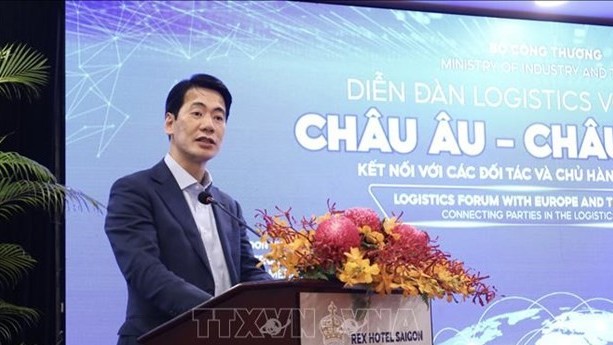
Promoting growth of garment and textile exports
Latest
| TIN LIÊN QUAN | |
| Garment-textile export turnover sees highest growth in three years | |
| Vietnam International Fashion Fair 2018 opens in Ha Noi | |
The result demonstrates the ceaseless efforts of enterprises in seeking and expanding markets, applying advanced technology in enhancing quality of their products, and improving their competitiveness.
Stable sources of orders
The number of orders won by Vietnamese garment companies is abundant, creating stable job and income for labourers. According to Chairman of the Board of Directors of Hung Yen Garment Corporation (Hugaco) Nguyen Xuan Duong, Hugaco reported an export revenue of around US$310 million in 2018, up 8% over the yearly estimate in spite of tough competition from Bangladesh, Cambodia, Indonesia and India.
Duong noted that Hugaco's subsidiaries have also won bulk orders to export products by the end of April and even by the end of June 2019. However, he expressed his worry about the trade war between the US and China which may affect the Vietnam's garment and textile industry.
As one of the largest garment firms in the southern province of Dong Nai, Dong Nai Garment Corporation (Donagamex) posted a growth rate of over 10% in 2018 and an export revenue of US$70 million. According to Donagamex General Director Bui The Kich, the company carried out a number of solutions to maintain established markets and expand into new ones, including investing in modern technology to increase productivity and ensure the competitiveness.
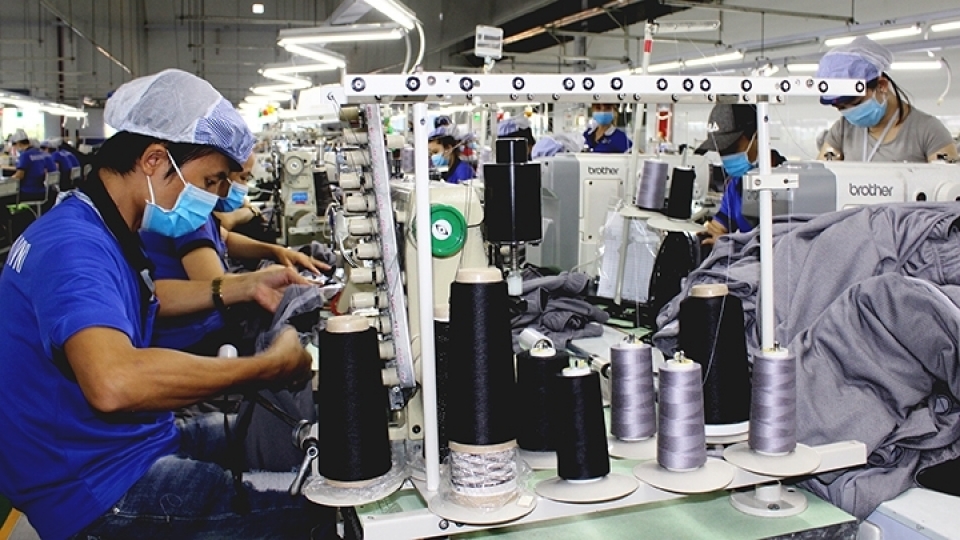 |
| Apparel production for export at a company in the Vietnam - Singapore Industrial Park in Binh Duong province. (Photo: NDO) |
Kich said that Donagamex received orders to be completed by the end of the second quarter of 2019, noting that, with positive signs from the world market and the Vietnam’s participation in the Comprehensive and Progressive Agreement for Trans-Pacific Partnership (CPTPP), the garment and textile sector will not worry about order shortage in 2019.
Executive Director of the Vietnam National Textile and Garment Group (Vinatex) Cao Huu Hieu affirmed that the export revenue of Vietnam’s garment and textile industry was estimated at US$36.1 billion in 2018, up 16.1% over 2017. A large number of garment companies have received orders for the end of the second quarter of 2019 and the entire 2019, Hieu noted.
Vietnam has been one of the leading garment and textile exporters to the US market for many years and Vietnam is the second choice for US apparel importers, after China. Meanwhile, Vietnam has yet to be able to compete with other rivals in the EU market because other competitors, such as Bangladesh and Cambodia, are offered tariff incentives without meeting any conditions of origin. If Vietnam can take advantage of the EU-Vietnam Free Trade Agreement (EVFTA) in the future, it will be able to gradually penetrate into the EU market.
Chairman of the Binh Duong Textiles Association Le Hong Phoa said that business situation of local garment enterprises in the province in 2018 is very optimistic and most of enterprises have fulfilled their production targets. The total export revenue of the garment and textile sector in the province reached US$2.65 billion, an increase of 16.8% compared to 2017. This is a good sign, showing that enterprises have grasped the opportunities and adapted well to the changes of the market economy. Notably, the number of apparel importers from the US and the Republic of Korea (RoK) placing orders to Vietnam has sharply increased recently.
Utilising opportunities
Vinatex Executive Director Cao Huu Hieu affirmed that when participating in CPTPP, Vietnam’s garment and textile sector will have opportunities to open its market and gain access to non-traditional textile and garment markets such as Canada and Australia.
Canada’s textile and garment import turnover reached US$13.86 billion in 2017, including US$814 million worth of imports from Vietnam, accounting for 5.9% of the total Canadian market share. Vietnam’s garment and textile export revenue to Australia posted at merely US$256 million in 2017, occupying only 2.8% of Australia’s total imports of garments and textiles, Hieu noted.
Enterprises in this field are expect to boost their exports thanks to reduced tariffs and boosted investment in supporting industries.
However, garment and textile companies have to face a lot of challenges to enjoy tariff incentives, such as stricter requirements on the proof of origin, business declaration, and record and document archives, in addition to competitive pressure from foreign direct investment (FDI) enterprises.
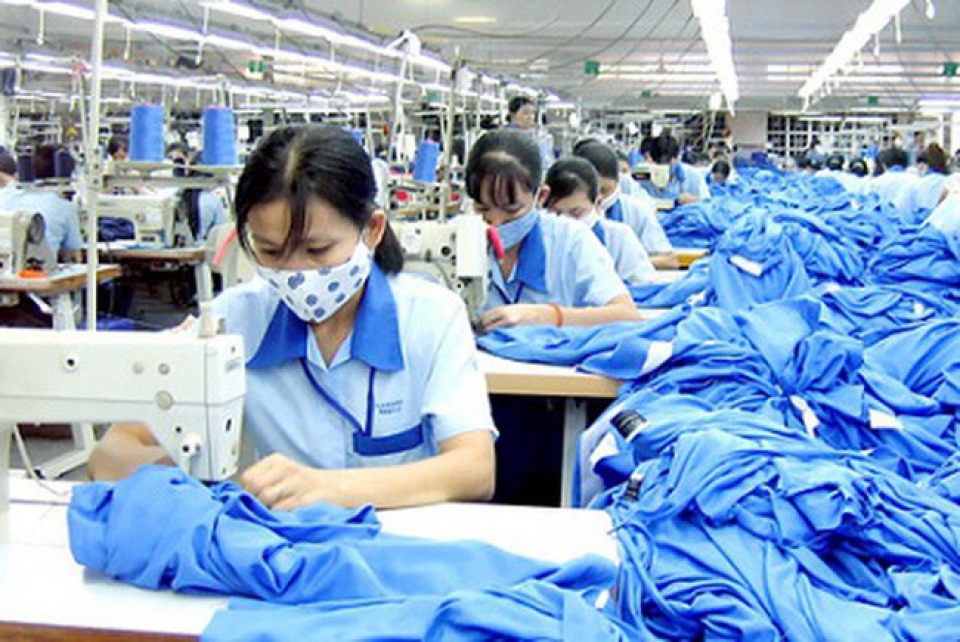 |
| Workers at a garment-textile company in Vietnam. (Photo: CaféF.) |
To penetrate into textile markets of CPTPP member countries, Vinatex has focused on boosting trade promotion and relations with customers while avoiding unnecessary costs. At the same time, the company focuses on increasing its self-control in raw materials and accessories, Hieu stated.
According to Bui The Kich, to take advantage of CPTPP, businesses should continue to invest in automated equipment to replace labourers and increase productivity and product quality.
The CPTPP, without the US, has also opened up new markets for Vietnamese firms such as Canada, Australia and several South American countries which have great demand for garment and textile products, Kich said. However, to overcome the challenges and make good use of opportunities from CPTPP, state management agencies should continue in administrative reforms, reduce the specialised inspection of import and export goods, and cut transportation costs to support enterprises, Kich added.
Meanwhile, Nguyen Xuan Duong warned that the garment and textile growth rate in the coming years will not be as good as in 2018 due to increasing competition and trade protection trend, particularly from the US.
Hieu said that businesses need to step up their investment and production solutions to continue to gain market shares from their biggest rival China and other rivals in the established markets. Regarding non-traditional markets, companies needs to take advantage of the CPTPP to penetrate into these markets, including the two potential markets of Canada and Australia. In addition, they need to solve the existing problems of exchange rates, inventory, orders, and others.
Enterprises are advised to invest in modern technology, enhance corporate management, improve working conditions, increase labour productivity and product quality while ensuring delivery time and prices of products to boost their competitiveness in the market. In addition, the State should develop mechanisms of support for enterprises in the areas of finance, tax and land and work out specific measures to encourage the development of supporting industries. Authorities also need to develop raw-material areas to serve the garment and textile industry as well as continuing in administrative reforms to facilitate enterprises in this area.
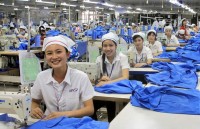 | Japanese capital continues pouring into textile and garment Japanese firms are scaling up investment into Vietnam’s textile and garment sector to take advantage of the huge market potential and Vietnam’s new-generation free trade ... |
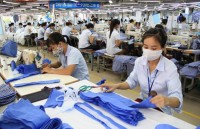 | Indian firms work to further explore Vietnam’s garment and textile market India is one of the major material suppliers of Vietnam’s garment and textile sector, but trade value between the two sides remains modest. Therefore, Indian ... |
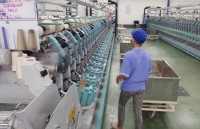 | VITAS works with WWF to green Vietnam’s apparel sector The World Wildlife Fund (WWF) and the Vietnam Textile and Apparel Association (VITAS) launched a project on October 26 to green Vietnam’s textile-apparel sector through ... |




